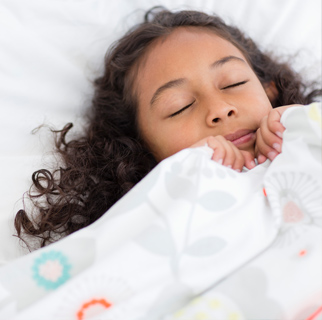Night Terrors

What are night terrors?
True night terrors occur in the stage of "deepest" sleep called Non-REM 3. The child is actually sleeping during the episodes and this is commonly mistaken by caregivers as unresponsiveness. Behaviors can include screaming, looking scared, kicking, panic, sleep walking, thrashing or mumbling.
Night terrors are harmless and children do not need to be "helped out" of them.
These are common characteristics of a night terror:
-
Your child is frightened but can't be awakened or comforted.
-
Your child's eyes are wide open, but he or she doesn't know that you are there.
-
The episode may be prolonged.
-
Your child doesn't remember the episode in the morning
What to do during a night terror
Children do not need to be “helped out” of a night terror. Night terrors occur in the deepest of sleep stages and they are not harmful to children. No other intervention other than making sure they are in a safe environment is necessary. However, caregivers often feel they must intervene. If you are so inclined, some suggestions include:
-
Try to help your child return to normal sleep. Don't try to awaken your child. Make soothing comments. Hold your child if it seems to help him or her feel better.
-
Don't try to awaken your child. Shaking or shouting at your child may cause the child to become more upset.
-
If out of bed, try to gently direct your child back to bed.
-
Prepare babysitters for these episodes. Explain to people who care for your child what a night terror is and what to do if one happens.
Night terrors are exacerbated by:
- Change of habits or sleep environment
- Sleep deprivation
- Illnesses
- Recent stressors
- Other conditions that affect sleep, such as Obstructive Sleep Apnea, may worsen night terrors
When to call your child's healthcare provider
Night terrors are not harmful, but they can look like other conditions or lead to problems for the child. Talk with your child's healthcare provider if you notice any of the following:
-
The child has drooling, jerking, or stiffening
-
Terrors are interrupting sleep on a regular basis
-
Terrors last longer than 30 minutes
-
Your child does something dangerous during an episode
-
Other symptoms happen with the night terrors
Driscoll Medical Reviewer: Daher, Amine, MD; Reviewed on 10/05/2020
© 2000-2024 The StayWell Company, LLC. All rights reserved. This information is not intended as a substitute for professional medical care. Always follow your healthcare professional's instructions.